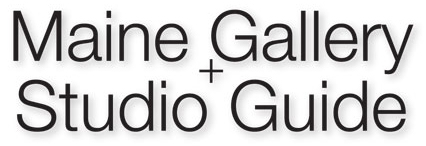The Zillman Art Museum, at 40 Harlow Street in downtown Bangor, opened all new exhibitions on Jan. 14 that will run through April 21 (second floor galleries) and April 30 (main floor galleries).
ZAM is open from 10 a.m. to 5 p.m. Tuesday through Saturday and brings modern and contemporary art to the region, presenting approximately 21 original exhibitions each year.
Admission to the Zillman Art Museum is free in 2022, thanks to the generosity of Birchbrook.
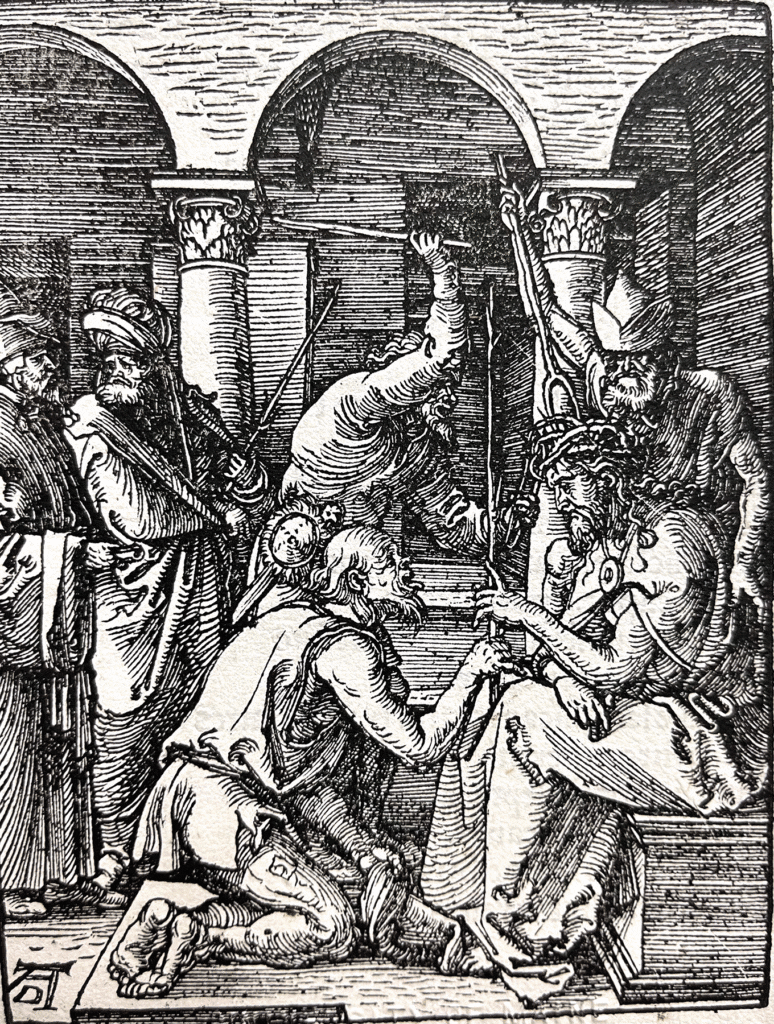
Against the Grain: Woodcuts from the Collection
Jan. 14 to April 30
Printmaking has been used for centuries and for a variety of purposes, including printing texts, advertisements, patterns on fabric and fine art. The earliest form of printmaking traces back to the Han Dynasty in China, around 206 BC to 220 AD. Johannes Gutenberg invented the first printing press in Germany around 1440, enabling the mass production of printed products and revolutionizing how information was shared with a significantly wider audience throughout Europe.
Woodcut, the oldest technique used in fine art printmaking, is a form of relief printing. Against the Grain highlights the diversity and history of woodcut prints, including examples from as early as 1496. Woodcuts are one of many printmaking techniques and are created by carving into a block of wood, traditionally basswood or cherry. It is a reductive process, meaning that the carved areas do not receive ink. Once the surface is carved, ink is transferred onto the block.
For traditional Western printmaking, oil-based ink is rolled onto the surface of the block using a tool called a brayer. The block is then placed on a printing press, with paper laid on top of the block. The woodblock and paper are then rolled through the press which applies even pressure, thus transferring the image onto the paper. For traditional Japanese printmaking, water-based inks are brushed on with a specialized maru bake brush. Paper is then placed over the block and hand-printed using a tool called a baren. By carefully rubbing over the whole block with considerable pressure, the image is transferred to the paper. This method is called mokuhanga.
The selected works in this exhibition illustrate the vast range of styles and subjects that can be accomplished through the woodcut process. The styles range from classical to abstract and emphasize the wide-ranging influence of this form of printmaking on generations of artists.
Angel of Death (1959) by Leonard Baskin shows the precision that can be accomplished with woodcut prints. His lines are smooth and appear as if the artist has drawn the image directly on the paper. Baskin’s work demonstrates a stark contrast to the approach employed by Matthias Mansen. In Halbfiguren (1983), Mansen’s print appears to be roughly carved. This style of quick, broad mark-making illustrates the free nature of his carving, as opposed
to Baskin’s very controlled method. While both artist’s focus on the human form, their finished images convey strikingly different outcomes.
In the print Untitled by an unknown Japanese artist, the traditional method of Japanese woodblock printing is demonstrated. By comparing this early work to the contemporary piece Dialogue in Red (1975) by Hiroyuki Tajima, the viewer can see the development of Japanese printmaking techniques over hundreds of years.
is completely abstract and relies on luminous color and biomorphic forms, rather than representational figures. Modern printmakers actively experiment with traditional methods, while also seeking new ways to achieve meaning in their work. The woodcut technique continues to be a process that artists explore as a way to enhance and expand their artistic practice.
The exhibition was organized by ZAM’s 2021-2022 curatorial intern, Delaney Burns.
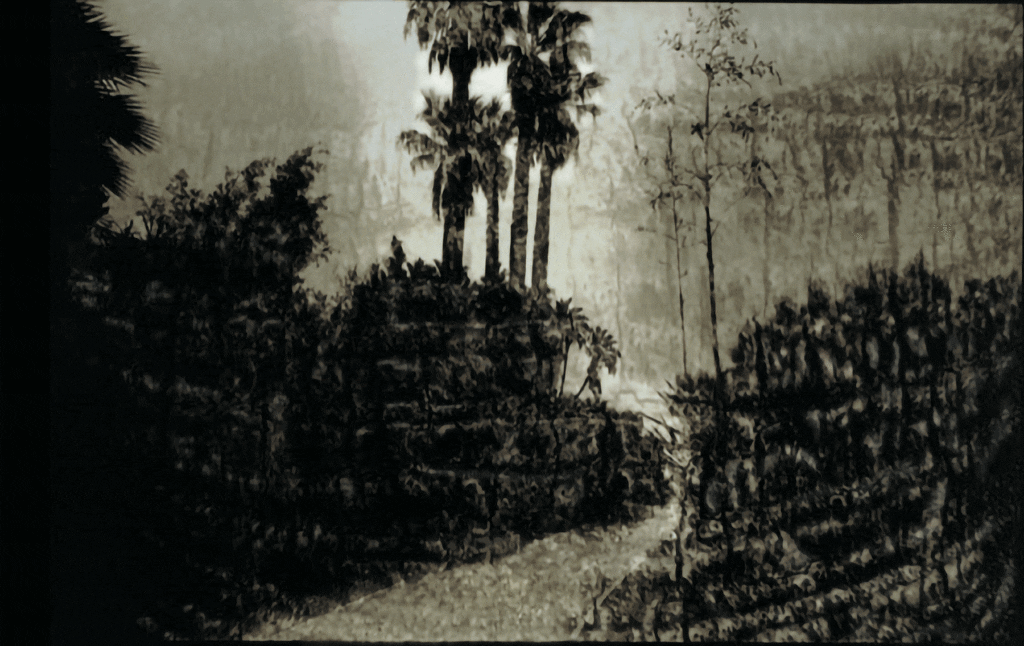
Alastair O. Finlay: The Fractured Negative
Jan. 14 to April 21
The Fractured Negative showcases a selection of black and white images by Alastair O. Finlay, a photographer who passed away in 2009. Finlay was born in Venezuela in 1943 to English parents and was the grandnephew of Sir William Orpen, a successful Irish Edwardian-era portrait painter. Finlay originally studied art in England and began his career in advertising and publishing. After discovering his affinity for photography at the age of 24, he relocated to New York City to work as an advertising and editorial photographer for luxury brands. However, Finlay was an artist at heart and began to fully explore photography’s creative potential.
Finlay’s images were created by layering negatives during the photographic exposure process. He placed multiple negatives in the darkroom enlarger, instead of a single negative which is most typical. This layering method produced the abstract, fractured quality found in his images. Finlay then scanned the darkroom prints as part of his process so they could be made into archival ink-jet prints, allowing the artist to more easily print in a range of large sizes.
Many of Finlay’s photographs capture scenes and locations in New York City that are superimposed over each other. These layered images evoke mysterious and ethereal feelings, and seem to portray random moments in time in the city. The moody style that Finlay achieves is heightened by the way in which he captures the fluctuating light on varied environments in NYC, which invites the viewer to contemplate the random, fleeting aspects of a bustling metropolis.
Nude Stardust, 1996 depicts an array of architectural elements that Finlay artfully layered to create a cohesive composition. Perhaps with a nod to the Constructivist artists, Finlay presents his version of an abstracted industrial modern world. This work contrasts with Palm Trees (1995), which also shows his ability to create an alluring scene— but rather than rigid structures the traditional setting seems to emanate a haunting glow. The two photographs below highlight Finlay’s skill in achieving a seamless integration of two different subjects in order to advance his creative vision.
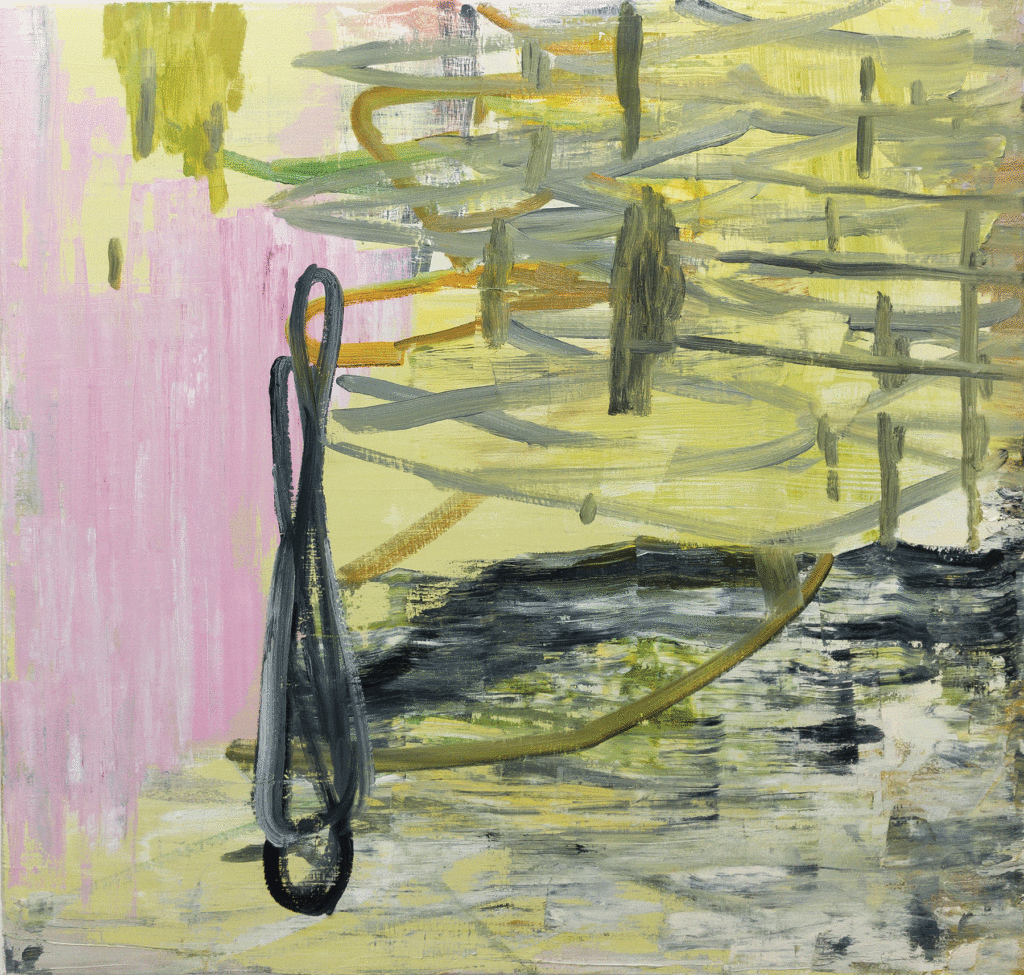
Deborah Dancy: Circling Time
Jan. 14 to April 30
Circling Time features nearly 30 paintings by Connecticut-based artist Deborah Dancy. Her gestural compositions, often monochromatic and balanced with bright pops of vivid color, are rooted in abstract expressionism. Some of Dancy’s works span six feet and embrace the large-scale format often favored by the early abstract painters. The artist uses a form of inventive biomorphic abstraction to evoke emotion and express an unbridled freedom. Opting not to begin a work with preconceived ideas, the artist instead chooses to highlight the beauty of the unpredictable and the process of revision. Dancy embraces the idea of a “beautiful mess” expressing that “incompleteness—the unfinished fragment of what ‘almost was’ and ‘might become’—amplifies meaning.”
Dancy uses both additive and reductive processes in constructing her paintings. She adds painted passages that might later be scraped away as she searches to achieve a balance in the composition. The artist’s spontaneous process contributes to the sense of free flowing emotion found in many of her paintings. Dancy encourages various interpretation and formulation of meaning through the eyes of the viewer. The artist states “Experiencing a painting of mine can be like going to a country that is completely different. I want someone to embrace the different, the difficult, the frightening—even the ugly—in a culture that is vastly different from their own.” By not fully revealing
her intention in the paintings, the observer is inspired to experience a unique, unrestricted, and deeply personal encounter with a painting.
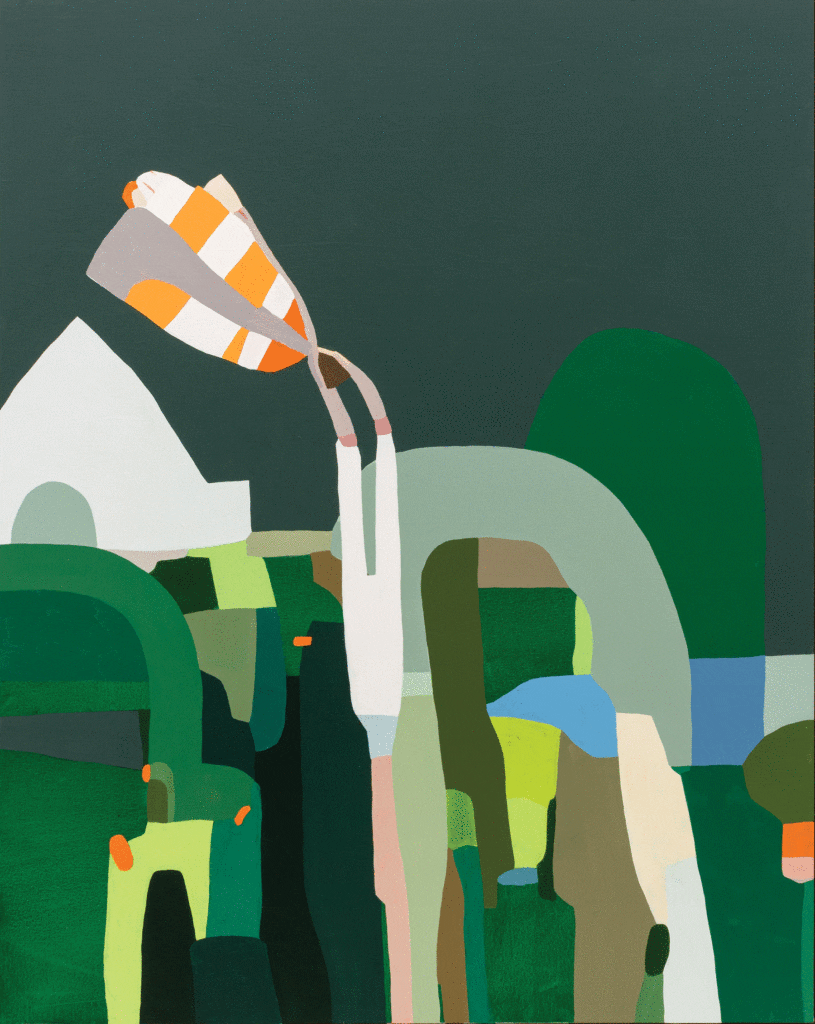
Jen Wink Hays: Valley Low
Jan. 14 to April 30
Valley Low features a selection of paintings and wall-oriented sculptures by Jen Wink Hays who is based in Philadelphia, Pa. Hays’ paintings are populated by whimsical shapes painted in a hard-edged fashion. Bulging forms that seemingly reference cartoon-like anatomy, chunky bent cylinders and other shapes, evoke forms from both the built and natural world and share space on these canvases. They unite in a sort of organic growth that seemingly emanates from the bottom of the compositions. Hays comments that “the works in Valley Low are undeniably upbeat and sunny in appearance yet — as the title suggests — something more psychologically complex and nuanced is at play.” While the artist’s paintings employ simple, block-like and “almost childlike shapes”, her process encompasses multiple steps, both additive and subtractive. Art critic and writer Nico Kos Earle comments that Hays’ paintings are built “through a series of increasingly controlled layers” and that the artist’s “zoom in, zoom out” approach is also “procedurally connected to our constant toggle between the organic and the synthetic.”
The exhibition demonstrates the artist’s keen ability to work in all formats and sizes, from works as small as
18 x 24 inches to mammoth paintings that span ten feet. A focal point of the exhibition is the large-scale painting, Blowback. The eccentric, stacked shapes appear to originate from the left corner and are created in a most cheerful palette that includes vivid lime green, mustardy yellow, coral, and chromatic grays. In some instances colors shift within the enigmatic forms — the bottom of some flesh-toned forms appear to be dipped in vivid flamingo-pink. Hays confidently integrates flamboyant and under-stated colors in her paintings, reflecting her desire “to negotiate between gaudy and tasteful in my work”. Energy and movement are also evident in Blowback. The prominent green element that hugs the right side of the “shape pile” seems to cast off an array of eccentric shapes that range from kite-like diamonds and circles to smaller random shards. These forms seem to have been expelled from the larger mass and float on the blue-gray expanse.
As in Hays’ paintings, her sculptural works are equally lighthearted. It is as if she plucked a few singular shapes from the canvases and gave them life in three dimension. The quirky sculptures Bobber 1 & 2 are fashioned from accessible, arguably “low art” materials such as papier mâché and have a playful resonance. In this wall installation Bobber 1, a two-toned bumpy shape that brings to mind microscopic cellular material, awkwardly dangles from twisted natural rope, while its weighty green and charcoal gray companion, Bobber 2, hangs alongside.

Stella Waitzkin: Materiality
Jan. 14 to April 21
Materiality features a selection of works by Stella Waitzkin that were gifted to the Zillman Art Museum by the Waitzkin Memorial Library Trust and the Kohler Foundation. Waitzkin was a sculptor connected to the abstract expressionist movement in New York City, and who worked alongside Jackson Pollock, Franz Kline, and Willem de Kooning. The works in this exhibition are created from cast polyester resin and a number are on display for the first time. Waitzkin famously commented “all words are lies”, so it is paradoxical that the primary subject of her works were books. The artist’s sculpted books are unreadable slabs that seem to entrap narratives and ideas within the rough, translucent pages.
Additional recurring subjects in Waitzkin’s work are birds and clocks, both of which are represented in this exhibition. The rough surfaces and embedded materials, such as silk flowers and assorted fabric, evoke a feeling of uncomfortable nostalgia. The act of casting these everyday objects in the hardened resin material bestows
the work with a sort of quirky permanence. In fact, when viewed as isolated objects, one might find them to be somewhat like fossilized relics.
From the 1960s until the early 2000s, the artist lived in the legendary Chelsea Hotel; a hotbed of creativity for artists, musicians, and writers who were drawn to the bohemian spirit that permeated its walls. Waitzkin found inspiration in the various objects she collected. She created a mammoth tableau in her apartment by stacking her sculptures en masse. In an article, her son recounted: “Her entire place was a bedlam of sculpture and old books and wood, garbage, anything that she might make into art.” She was a collector and “put everything imaginable inside her books without words, religious icons, baby shoes, faces of animals. She once embedded a dead bird in one of her sculptures.”
Although Waitzkin’s sculpted books are without words, they invite contemplation. The eccentric forms and the objects embedded within contain unique moments in time that are memorialized by the artist.
Categories: Art exhibit, Art Talk, Bangor, exhibitions, gallery, openings, shows
